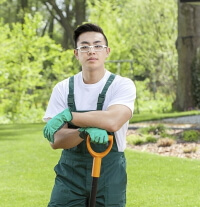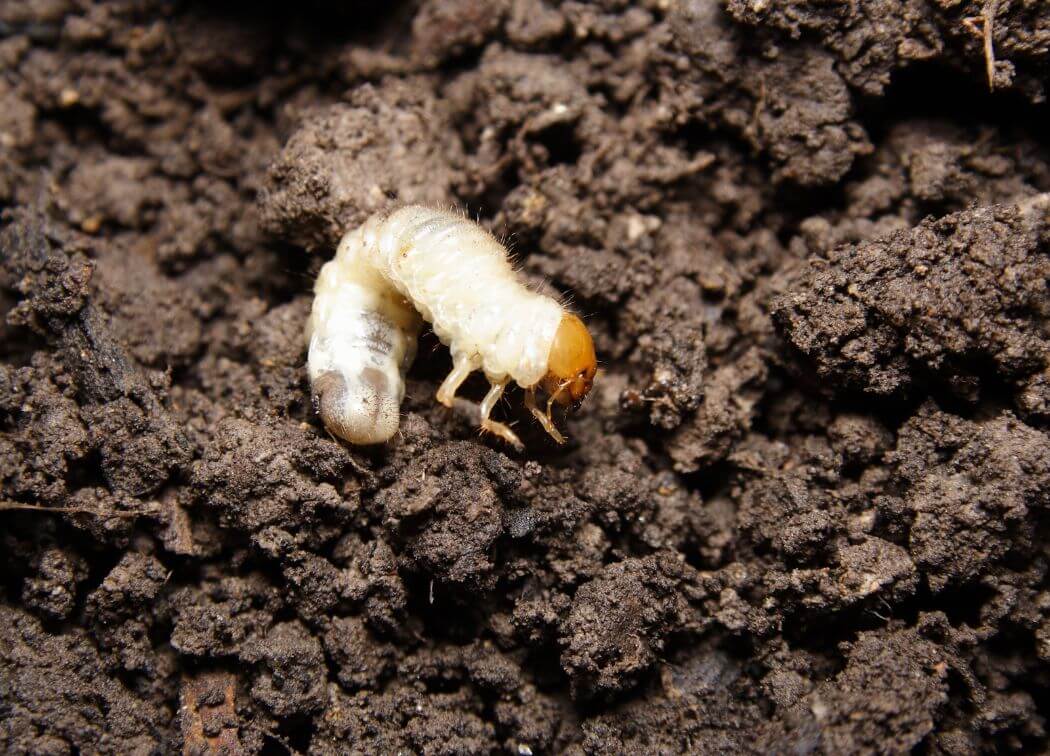Is your lawn starting to look a bit differently? Do you notice turf damage on a square foot of your lawn and wonder how it happens?
You may not realize, but if your lawn looks brownish or yellowish by the summer and early fall season, it is HIGHLY LIKELY caused by GRUBS!
So you want to know how to get rid of grubs on the lawn? You’ve come to the right place!
Read more to learn the process of getting rid of grubs on your lawn!
What Are the Signs That Grub Worms Are Present on My Lawn?
Any square foot brown patches on your lawn are a COMMON sign that your lawn is damaged.
However, this could mean several things.
- Your lawn is suffering from a disease that kills grass.
- Fungal infections have taken over your lawn.
- Grubs are eating the lawn.
Do you want to know if it’s grubs destroying your lawn?
Here are the signs that it is INDEED the grubs ruining your precious lawn!
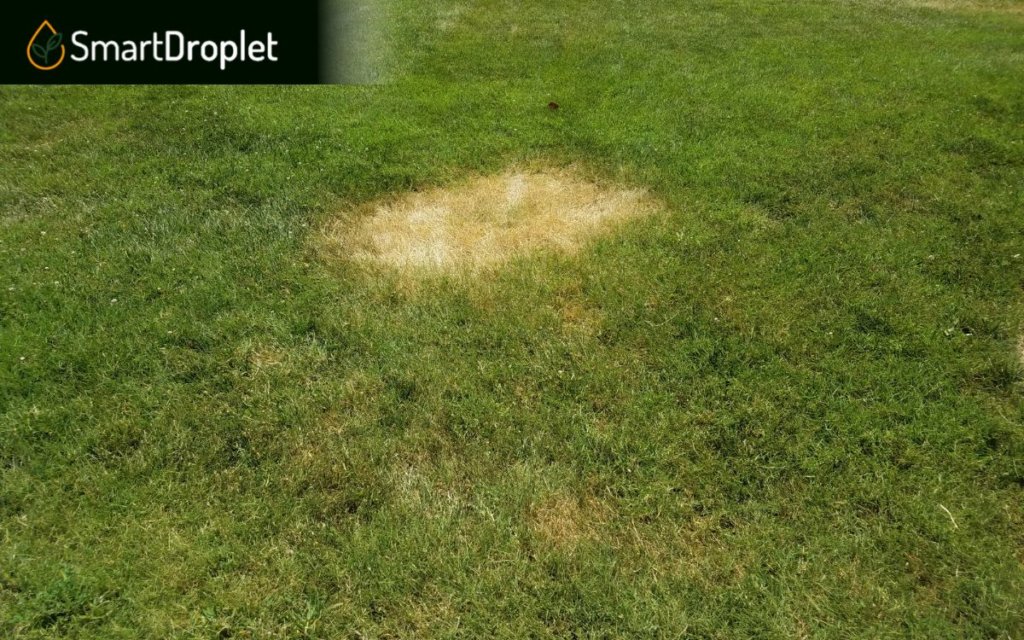
Dead Patches in the Lawn
A grub-infested lawn usually starts with brown or dying grass spots that make it thin out and die. The spot typically turns YELLOW as a sign of death.
These spots appear on many lawns because grubs FEED on grass roots.
A grub feeding on the root system of the grass will kill the turfgrass EASILY.
Because the root makes the grass bound to the soil, the grubs will destroy the plants’ ability to receive nutrients from the soil and environment, killing it.
Spongy Turf
If you notice that it is easy to pull out the grass on your lawn, that is most likely GRUB DAMAGE.
It is likely grub damage because grubs feed on roots; destroying the roots of the grass makes the plant less bound to the soil, allowing it to be pulled out easily.
Do you want to know if you have spongy turf? Do a TUG TEST on your grass and see if the grass gets easily pulled out or not!
If it gets pulled out easily, it’s a bad sign that the surrounding area is seriously damaged!
Increased Raccoon and Bird Activity
Raccoons and birds are the PREDATORS of grubs and beetles.
Grubs like Japanese beetles, Japanese beetle grubs, adult beetles, white grubs (also known as lawn grubs), and other grubs fall victim to these predators!
If you notice that raccoons and birds often visit your lawn, there are beetles and grubs guaranteed on your lawn!
While it may seem good that animals are helping you kill grubs, it is a telling sign that there are MANY grubs if raccoons and birds often visit your lawn!
Another similar sign of the presence of white grub worms is if you notice beetles flying over your lawn or even your neighbor’s lawn.
Presence of Many Grubs in the Soil
Do you want to know if there’s a grub infestation on your lawn? Look out for C-shaped worms, colored milky-white, spread across your lawn.
While a few white grub worms will not cause too much damage, many of them on your lawn will CAUSE SERIOUS DAMAGE.
To be more specific, if there are more than 5 grubs per square foot of soil on your lawn, those grubs will produce white grub damage across the land!
Do not underestimate those small white worms! The worms and beetles can increase in the grub population quickly!
How Do You Check for Grubs on Your Lawn?
Before committing to the treatment of your lawn, you first have to identify the PRESENT grubs on your lawn!
One of the first and ESSENTIAL signs to know if grubs are present on your lawn is if there are irregular brown patches of dying grass on your lawn.
The affected areas indicate that there are MANY grubs on that patch! Did you spot those patches on your lawn? Pull them up and see if there are lawn grubs on the patch.
How do you lift your turf? There’s an easy way to do so!
We HIGHLY RECOMMEND that you dig a square foot around 3 inches deep around the turf with the brown patches to have a good area to investigate the lawn grubs and beetles present.
If only ONE OR TWO GRUBS are present, the patch is still healthy!
If FIVE OR MORE GRUBS are present, the lawn has a grub worm infestation! Quickly treat the lawn to prevent further damage caused by the white grubs!
How Do You Get Rid of Grubs on Your Lawn?
To achieve grub control, either kill grubs when they are grub worms or kill grubs when they are adults to prevent them from LAYING EGGS, further increasing the grub population!
If you think directly killing these pesticides is gross and a hassle, there are chemical and natural ways to kill grubs naturally and as hassle-free as possible.
Read more below to know how to get rid of grubs and beetles!
Step 1: Apply Grub Control Pesticide
The first step in getting rid of grubs is to apply grub control pesticide on your lawn!
The most EFFECTIVE grub control pesticides have bifenthrin, imidacloprid, or carbaryl. These ingredients work best for established lawns.
When using insecticides in killing grubs, insecticides with ingredients like GrubEx, Merit, and Sevin are the STRONGEST. Once in contact with grub worms, it kills them INSTANTLY.
Are There Any Alternatives to Insecticides?
Insecticides aren’t the only effective tools to eliminate all the grubs.
You can also purchase alternative options like liquid grub killers and granular grub killers to get rid of those pesky things!
If you want to use liquid grub killers, the best way to fully utilize this product is to mix its active ingredients with water and spray the infested areas. Ensure that you follow what the label says!
It is best to THOROUGHLY spray the areas to ensure the pesticide reaches deep into the soil!
If you want to use granular grub killers, apply the product using any regular garden spreader and water the treatment into the soil to kill most grubs!
Choosing the best grub killer will do you WONDERS when restoring your lawn! One of the best in the market is the Scotts GrubEx! It is one of the most trusted grubworm killers in the industry!
However, if you want a great alternative to the Scotts GrubEx, you can go for the BioAdvanced Grub Killer Plus! What you want to buy is up to you, but it’s always good to have more options!
The Key in Fully Utilizing Pesticides Is Timing
Utilizing pesticides come in two options: a grub preventer and a grub killer.
While both result in fewer grubs on your lawn, both have DIFFERENT OBJECTIVES.
If you want to use a GRUB KILLER, your objective is to kill grubs as soon as you see any form of damage on your lawn.
If you want to use a GRUB PREVENTER, while they do not kill grubs immediately, they help prevent grubs from developing into a grub infestation, and it has lasting effects that can last seasons.
For example, using a grub preventer in the previous fall will have effects that can last for months!
Preventative products are best applied in April or May to prevent Japanese beetle grubs from developing.
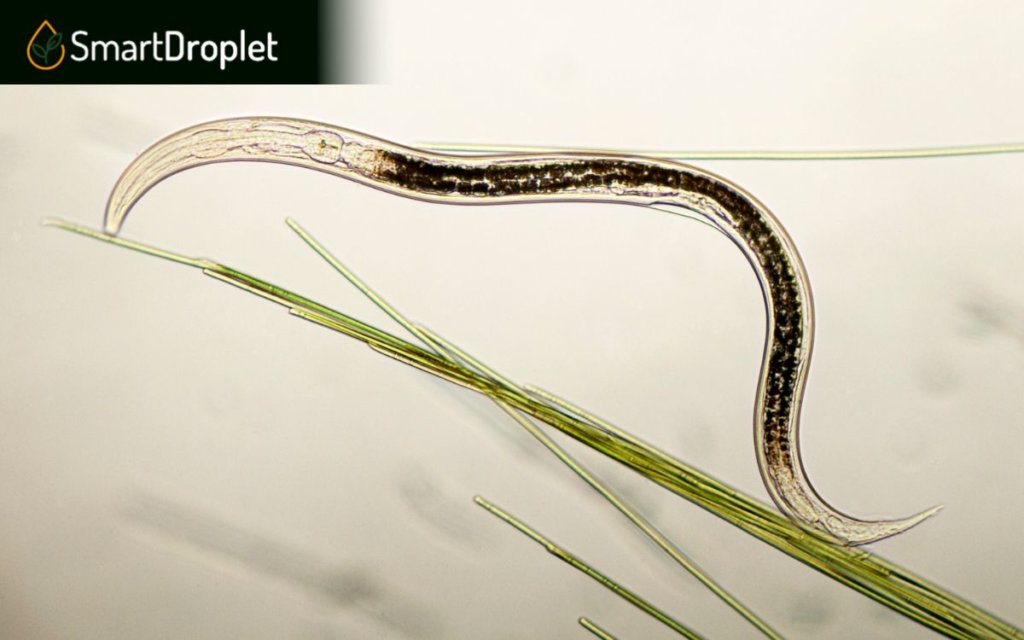
Step 2: Apply Beneficial Nematodes to Control Grubs Naturally
Applying beneficial nematodes will get rid of grub worms on your lawn naturally within a few days!
Beneficial nematodes are tiny roundworms that move in the moist soil that enters grubs, RELEASING BACTERIA that attack them and naturally get rid of them.
Do you want to know how to use beneficial nematodes properly? Here’s how you use them!
- Get the BEST and MOST BENEFICIAL nematodes.
- Mix the beneficial nematodes with distilled water and put them in a sprayer.
- Water the soil properly and carefully to ensure moist soil.
- Spray the beneficial nematodes on a grub-infested patch in the evening.
We HIGHLY RECOMMEND applying the nematodes at night because they get killed by light and heat. Ensure the temperature is above 60°F for the nematodes to work their best.
Nematodes are effective and mobile in moist environments. With the soil moist, nematodes will work and follow grubs to infect them.
It takes up to three years for nematodes to produce the best results and establish a large enough population to kill grubs.
The life cycle of nematodes takes a while but will yield the BEST RESULTS!
Step 3: Introduce Milky Spore Disease
Introducing the milky spore disease on your soil will help control grubs and reduce the population DRASTICALLY.
The milky spore is applied on the turf as dust and naturally controls grubs. The bacteria inside the dust is eaten together with the turf’s roots.
Eventually, the grubs get infected and die.
When applying milky spore to the turf, apply a tablespoon of the dust spacing four feet apart from each application. DO NOT use a spreader or a garden sprayer to spread.
Water the treatment lightly for about 15 minutes and wait for the results!
Milky spore is an excellent natural treatment for grubs that last a very long time – specifically more than 15 years!
While these results last a long time, it takes a long time to develop.
The biggest DRAWBACK of milky spore is that it only gets rid of Japanese beetle grubs. It won’t work on other species like June beetles and May beetles.
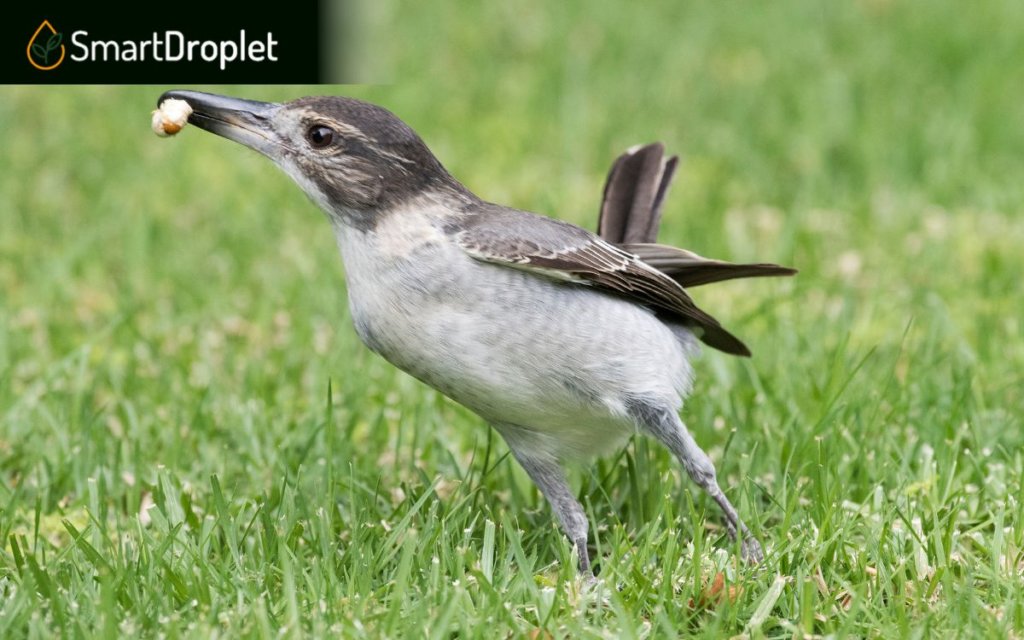
Step 4: Encourage More Birds in Your Lawn
If you’ve seen birds feeding on your turf, those are the HOUSE WRENS.
House wrens feed on white grubs. Encouraging these birds to your turf is an EFFECTIVE WAY in reducing the grub population.
Building birdhouses for the house wrens will encourage them to keep feeding grubs on your turf.
The DRAWBACK is that house wrens can damage your turf when looking for grubs. They also do not have the capabilities of stopping large infestations of grubs.
Step 5: Apply Neem Oil Homemade Grubworm Killer
Neem oil has insecticidal properties and is a GREAT option in repelling grub worms.
It helps prevent the life cycle of beetles from growing, avoiding more eggs from being laid and more grubs to be produced.
Mix the oil with water and spray it on the turf using a hose-end sprayer to maximize neem oil. Apply the mixture over areas with dead patches so that the mixture targets the larvae.
An alternative to neem oil is using dawn dish soap. While it may not be as effective as neem oil, it can help control mild grub infestations.
To use dish soap properly, mix dawn soap with water and spray it over the infested area.
Conclusion
In conclusion, grub problems will never disappear; that is why constant maintenance and proper lawn maintenance knowledge are KEY in maintaining a healthy lawn!
If you want to get rid of grubs and prevent more grub problems, it takes a lot of PATIENCE and HARD WORK, but the path to maintaining a healthy lawn is a challenging but rewarding experience!
We hope that you learned a thing or two about getting rid of those pesky grubs on your lawn!
With proper maintenance and care, your lawn and cool-season grasses will always be pretty and healthy!
Frequently Asked Questions (FAQs)
If the article did not provide you with enough information regarding the topic, this section would show you what people usually ask!
Here are the most frequently asked questions regarding lawn grubs and beetles alike!
Why Should I Restore Grub Worm Lawn Damage?
Restoring grub worm lawn damage will make those dead patches that make your lawn look ugly turn into a luscious, beautiful, and lovely patch of grass!
You must maintain your lawn to keep a beautiful look. Too much damage can be irreparable!
Lawn damage can be SEVERE, especially if the grubs naturally eat the roots of your lawn. The damage can be severe to the point that restoration will not be ENOUGH.
If the patch peels off like a carpet, it is time to change the soil and plant new seeds.
Take note of the seasons as well! During the winter, grubs usually burrow deeper to become dormant, so it’s best to restore them when they are active to kill them easier.
How Do I Repair the Damage in My Lawn?
Here are some of the essentials in repairing damage to your lawn!
- RAKE OVER the dead grass to make the soil visible enough for you to identify the damages. If acknowledged, plant new seeds on the bare spots of the soil for new grass to be planted!
- If bare spots are small and the grass in its entirety is still healthy, we HIGHLY RECOMMEND overseeding the lawn in early spring to early summer! It’s best if you use Bermuda grass!
- Fill the bare spots with sod. This accomplishes that the turf will not AUTOMATICALLY refill with new grass.
Will Grass Be Able to Grow Back After Lawn Grubs Damage It?
While some grass can still grow back after lawn grubs damage, SEVERE damage to the grass will make the grass unable to grow back!
It is because lawn grubs naturally eat the root system of the plants planted on your soil!
Try using preventative treatment if you want to get rid of grubs and protect your lawn. While there are restoration procedures, it is DIFFICULT to restore a severely damaged lawn!
Due to the nature of lawn grubs, if they eat the roots of your lawn, you CANNOT repair the damage.
What Causes Lawn Grubs?
Grubs are the LARVAE of the June beetle.
Lawn grubs are caused by scarab beetles, also known as June bugs and Japanese beetles, laying eggs under the surface of the lawn.
They are also known as June bugs because adult beetles lay their eggs during the late summer, and the larvae do the most damage to lawns in late summer to early fall.
During the winter season, they burrow deeper to hibernate and become dormant.
The eggs are then hatched and become lawn grubs in the larval stage. Lawn grubs feast on the roots of lawns to take in nutrients and eat for survival.
The grubs, in natural ways, turn into pupae, and once the growth finishes, they re-emerge as scarab beetles.
The life cycle of June bugs restarts and said scarab beetles would lay eggs to further increase the young grubs population, increasing the risk of a severely DAMAGED LAWN.

